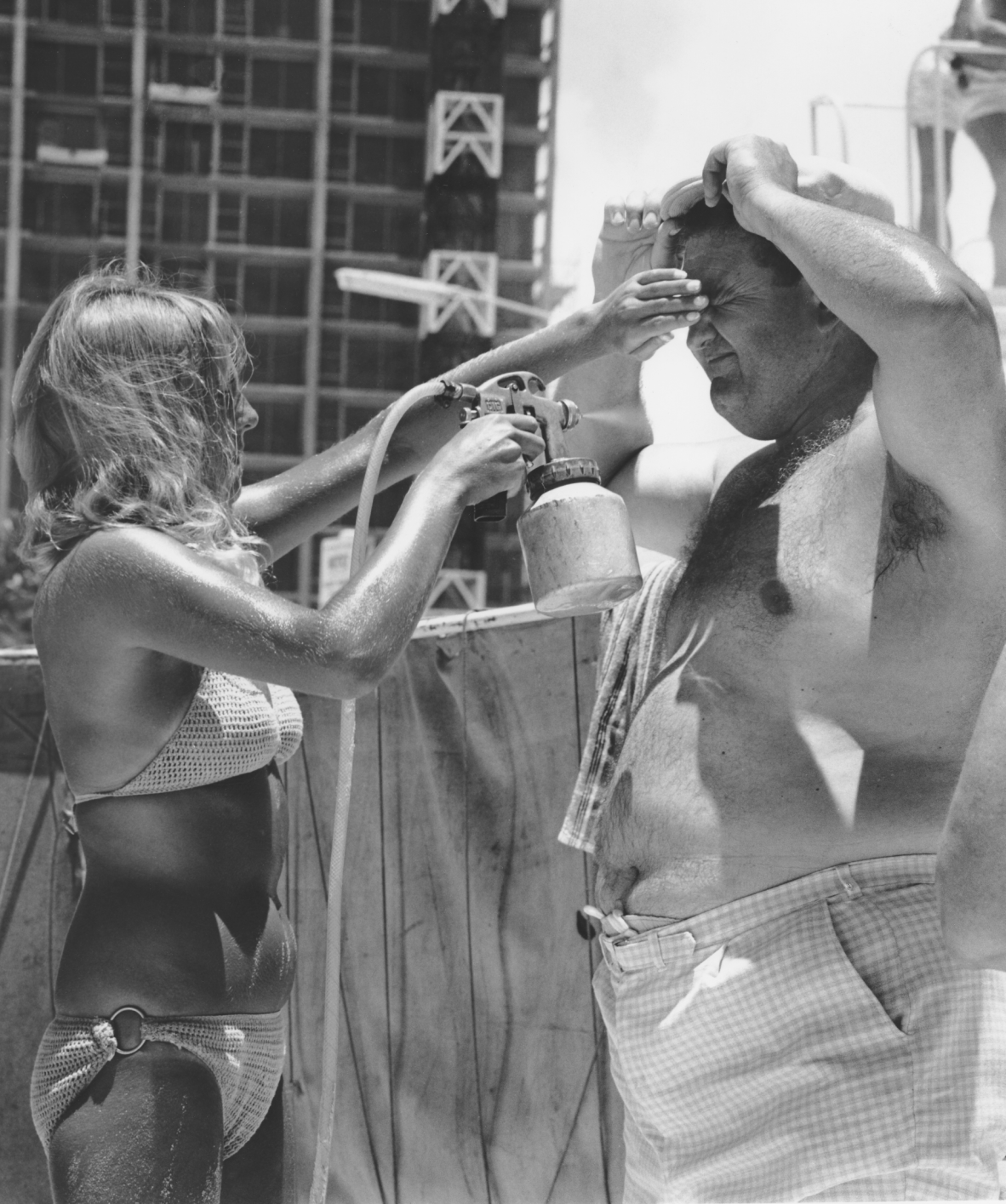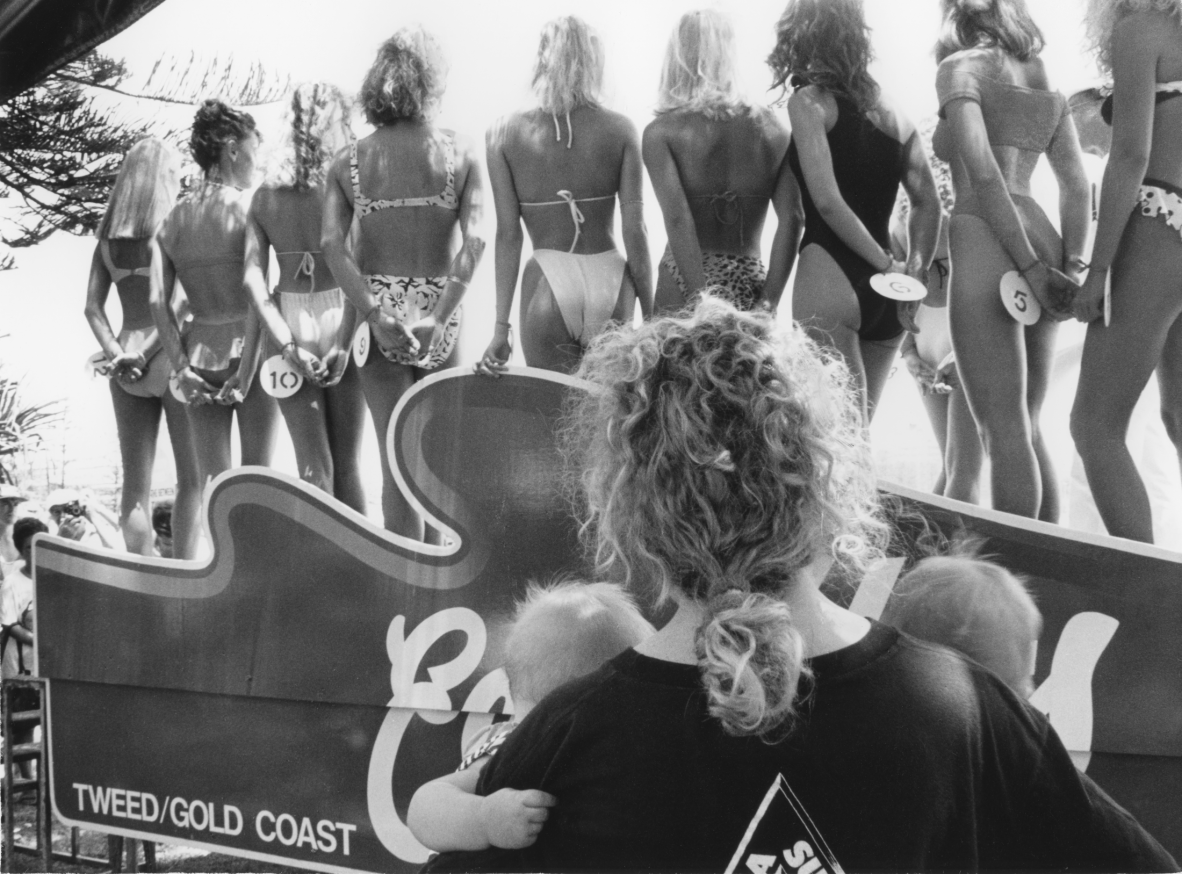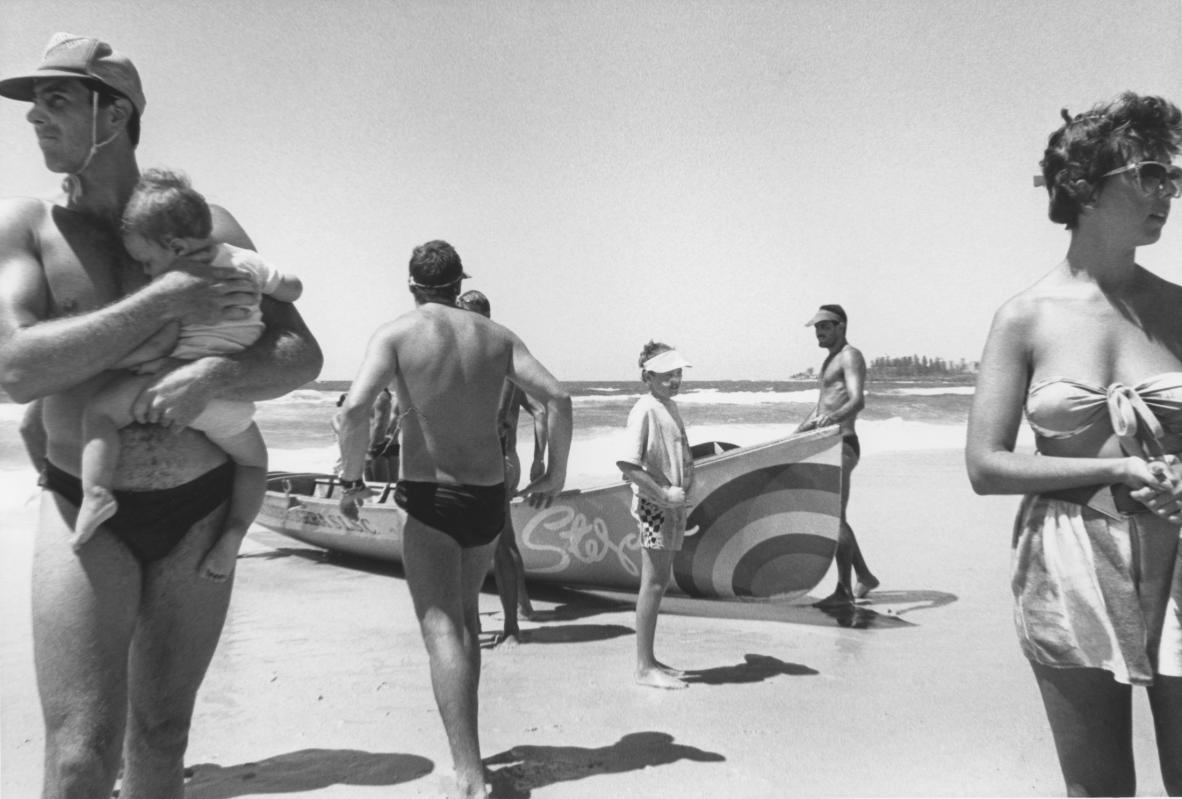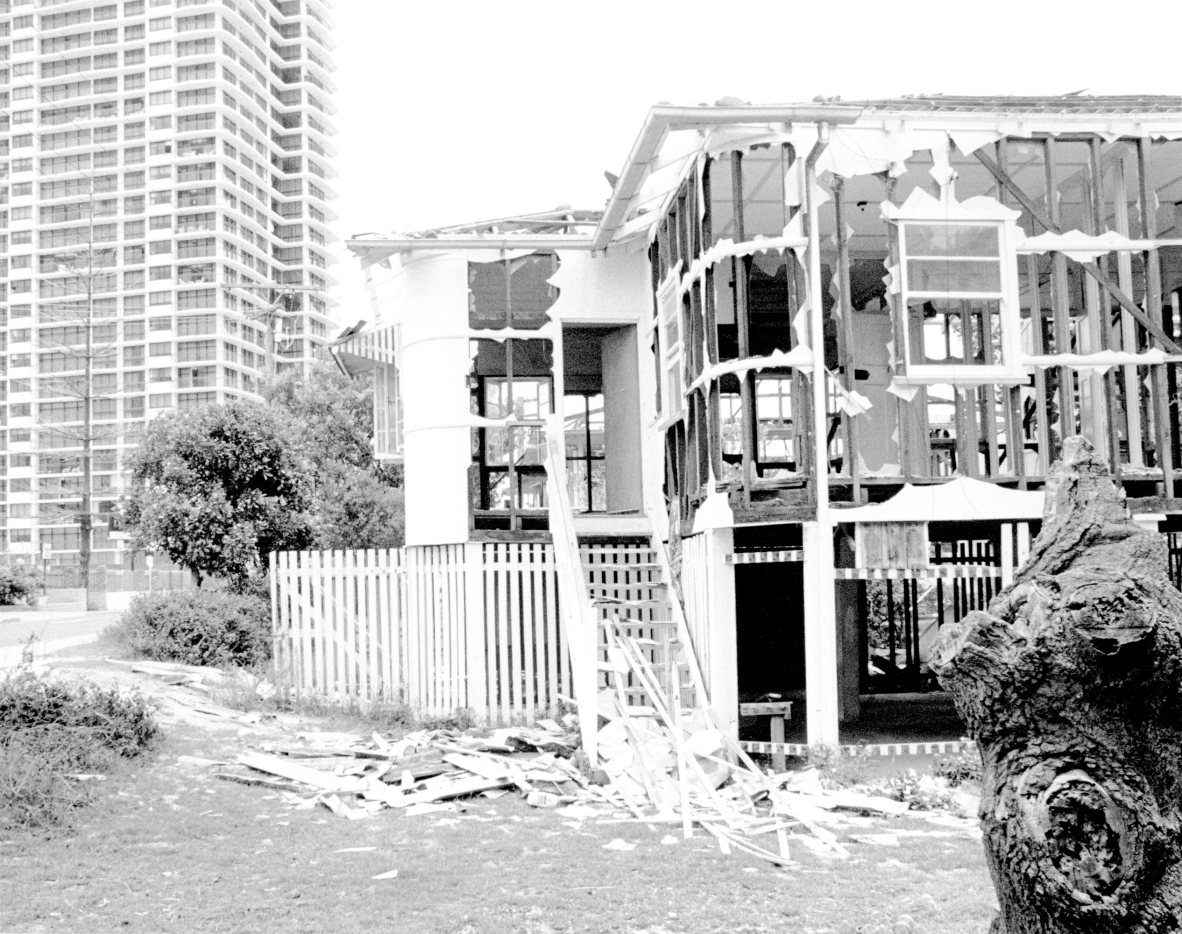Photographic prints of the Gold Coast by Graham Burstow
By Guest blogger: Stephen Burstow | 19 March 2021
Thirty-eight black and white prints by Graham Burstow, documenting the outdoor social life of the Gold Coast from the 1960s to the 80s, have been added to the library’s collection of Burstow’s work. The prints formed part of a major exhibition held at Brisbane Powerhouse in 2014 that then travelled to the Gold Coast City Gallery (now HOTA) in 2015. The images were also reproduced in the book, Flesh: The Gold Coast in the 1960s, 70s, and 80s.

Mutton bird tanning oil, Surfers Paradise, c. 1960s. Photographer: Graham Burstow. 32781, Graham Burstow's Silver Gelatin Prints 1960-1980s, John Oxley Library, State Library of Queensland
The prints include many images that instantly transport the viewer to the very different beach culture of that era, such as the spraying of tanning oil at Surfers Paradise.

Beach girl contest, Coolangatta, c. 1970s. Photographer: Graham Burstow. 32781, Graham Burstow's Silver Gelatin Prints 1960-1980s, John Oxley Library, State Library of Queensland
Images of other rituals such as beach girl contests and surf carnivals also give a sense of the very public spectacle that beach life had to offer through this period.

Surf Life Saving carnival Coolangatta, c 1970s. Photographer Graham Burstow. Photographer: Graham Burstow. 32781, Graham Burstow's Silver Gelatin Prints 1960-1980s, John Oxley Library, State Library of Queensland
However, Burstow’s view of these events is never straightforward. While press photographers were immortalising the winners of a beach girl competition, Burstow would often be at the side of the stage, wanting to show the relationships between the spectators and the competitors. At surf carnivals, rather than capturing surf boats crashing through mountainous swells, he waited until after the official action was over, more interested in how the surf life savers returned to their less heroic roles as fathers. Here is a much more inclusive vision of this beach culture: not everyone lining up for the tanning oil was a bronzed Adonis! Beach goers, feeling the freedom to move about in this inviting space, often created surprising, humorous juxtapositions, and Burstow was there to record them.

Demolition of a house, Surfers Paradise ca. 1970s Photographer Graham Burstow. 32781, Graham Burstow's Silver Gelatin Prints 1960-1980s, John Oxley Library, State Library of Queensland
As well as documenting the social rituals of the period, Burstow was also observing the rapidly changing built environment. Thousands of humble fibro cottages were replaced by high rise apartments over just a few years, and his photographs of this process are evidence of the rapid redevelopment of this coastal landscape.
For anyone who lived or holidayed at the Gold Coast from the 1960s to the 80s, these images will no doubt evoke instant nostalgia. However, in Burstow’s images there is also the wider vision of what happens when Australians are released from their everyday lives by the pleasures of the beach.
Stephen Burstow, son of Graham
More collections from Graham Burstow
Comments
Your email address will not be published.
We welcome relevant, respectful comments.